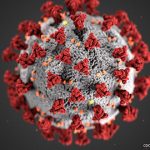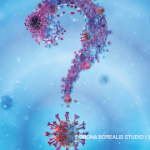A minority of patients experience lingering symptoms after infection with SARS-CoV-2, similar to some other previously known post-infection syndromes. Although we are just beginning to understand the different presentations, pathophysiology, risk factors, prognosis and treatment of long COVID, rheumatologists can play a leadership role in managing patients with the illness and contributing to this important research area.
Definitions
Efforts to study long COVID are made challenging by the fact that the syndrome is not yet well defined, and multiple terms have been used for post-COVID symptoms. The Centers for Disease Control and Prevention (CDC) defines postacute sequlae of COVID-19 (PASC) as persistent symptoms at least 28 days post infection with SARS-CoV-2, but the World Health Organization defines it more stringently, as persistent symptoms at least 90 days after infection.1-3
Distinguishing sequelae of COVID-19 from clear pathophysiological causes related to viral damage (e.g., symptoms from lung scarring) from those with symptoms of less clear origin is also important. Cassandra Calabrese, DO, a rheumatologist and infectious disease specialist who is an associate professor at the Cleveland Clinic Lerner College of Medicine, has defined long COVID as a syndrome with a variety of potential post-COVID symptoms that cannot always be explained by clear pathophysiology or an alternative diagnosis.4,5
Researchers have documented dozens of potential symptoms of long COVID, but the most common are:
• Post-exertional fatigue;
• Neurocognitive dysfunction (i.e., brain fog);
• Breathlessness; and
• Musculoskeletal pain.
In some patients, symptoms persist after the acute illness has ended. Others experience new-onset symptoms after the virus initially appears to have cleared.
Dr. Calabrese explains that patients seem to present with different clinical endotypes. For example, some have primarily a chronic fatigue similar to that of myalgic encephalomyelitis/chronic fatigue syndrome; others have predominant neurocognitive impairment; others display a pain endotype that resembles fibromyalgia; and some display more autonomic dysfunction, such as postural orthostatic tachycardia syndrome.
Pathophysiology
The pathophysiology of long COVID is unknown. Ongoing viral activation is a leading theory, and some emerging data support this idea of antigen and viral persistence.6 Some research has also demonstrated activation of both the innate and adaptive immune response, as well as the formation of various autoantibodies, although the relationship between such findings and symptoms is far from clear.7
Following acute infection with Epstein-Barr virus, SARS, West Nile virus, polio and dengue, a minority of patients experience chronic disability. Less clear evidence exists for chronic disability following varicella-zoster infection and post-treatment Lyme disease.8 But our understanding of the etiology of these post-infection syndromes is relatively poor. They are heterogeneous, and considerable overlap exists among common symptoms, such as fatigue, poor sleep, dysautonomia, musculoskeletal pain and neurocognitive complaints.




